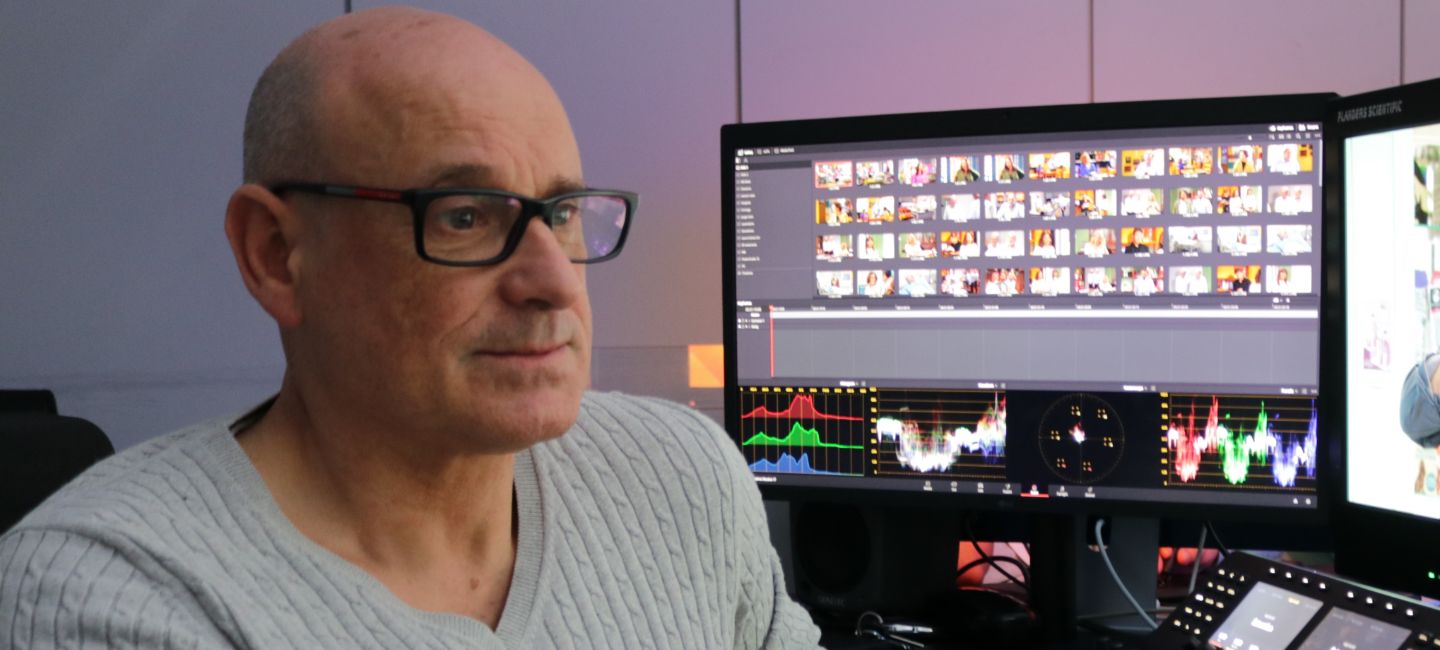Interview with Luís Marques da Silva – Director of Post-Production Image Treatment
Luís' professional career began at RTP, later he started as a freelancer and in 2007 his path crossed with SP Televisão and it's been a few years since this union. Currently, Luís is the Director of Post-Production Image Treatment.
Tell us about your professional career
My professional career in the audiovisual area is without a doubt a long life of "images"! I started at a time when audiovisual was not as widespread as it is today, and there were no educational establishments where we could learn. My first professional experience began at RTP, where I took the Image Operator course, and it was as an Image Control Operator that I developed and progressed my activity in this company, overcoming some challenges, acquiring skills and valuable experience. After 15 years, it is as Assistant to the Head of Production Resources in Lisbon that I declare my collaboration with this public company over. Times were changing and the audiovisual industry was also changing. From 1997 on, I began to work as a freelancer, working for several audiovisual production companies as Chief Production Technician and Video Editor. My path also includes teaching, as I collaborated in the training of operators at the RTP Training Center, and taught at professional video schools, such as ETIC and at the Escola Superior de Comunicação. In 2007 I collaborated with SP Televisão in the design of the technical infrastructure - studios and post-production equipment - and since that year until now that collaboration has been maintained and strengthened. Currently I am Colorist and Responsible for the Color sector. My professional path in the audiovisual area is without a doubt a long life of “images”!
How does a colorist work and which are the tools used?
Since color does not exist in a free state in nature, the colorist is working in an area of image perception and color comes into existence only after our brain processes it. Assuming that there are no two people seeing the same color, we can imagine all the problems that arise from this. The colorist, in short, is the professional responsible for optimizing the image that reaches the viewers through various techniques, such as Color grading. With the advent of Digital and the ease in manipulating images, the demand has arisen for professionals in the market who can adjust balance and create environments, both for television and digital cinema. This is then the role of the colorist, who is divided into two main aspects: color correction and color grading.
Color correction is the colorist's first task as soon as the image is received, and this process helps to ensure that, in a scene, the various takes are matched in color and exposure. In short, if there are two cameras, there are always two different shots. Furthermore, the same scene can be shot on different days and at different times, often in uncontrolled environments (such as outdoors with daylight), which can interfere with the final appearance of each take, especially since daylight is constantly changing, both in intensity and color temperature. At the end of this process, and after all the images are equalized, we can move on to the color grading stage.
Color grading is the manipulation of the color of a scene for artistic or stylistic reasons. Colorists need to have a strong understanding of color theory and the impact of using complementary color schemes. This more artistic side defines the chromatic ambiences, the relationship of contrasts and texture, the density of the color, its saturation, and also helps to surround the story with emotion, - this is called Look. We can say that it is the "alchemy" of colors! All this is done through software, on a computer network, and it is up to color professionals to deepen and update their technical knowledge each time. In the past few years, there has been a greater focus on involving the colorist in pre-production with other departments, such as production, directing, or cinematography.
Finally, this is an iterative process and is often used for testing, adjustment, and is definitely another tool.
What challenges has the telenovela TIMELESS LOVE brought you?
There is a great daily challenge, which is to follow all the technical evolutions that are always boiling and apply them to our work. This is, without a doubt, a constant challenge inherent to all novels, however, making each new novel a unique work that makes a difference is always the biggest challenge... and Flor sem Tempo is no exception!


